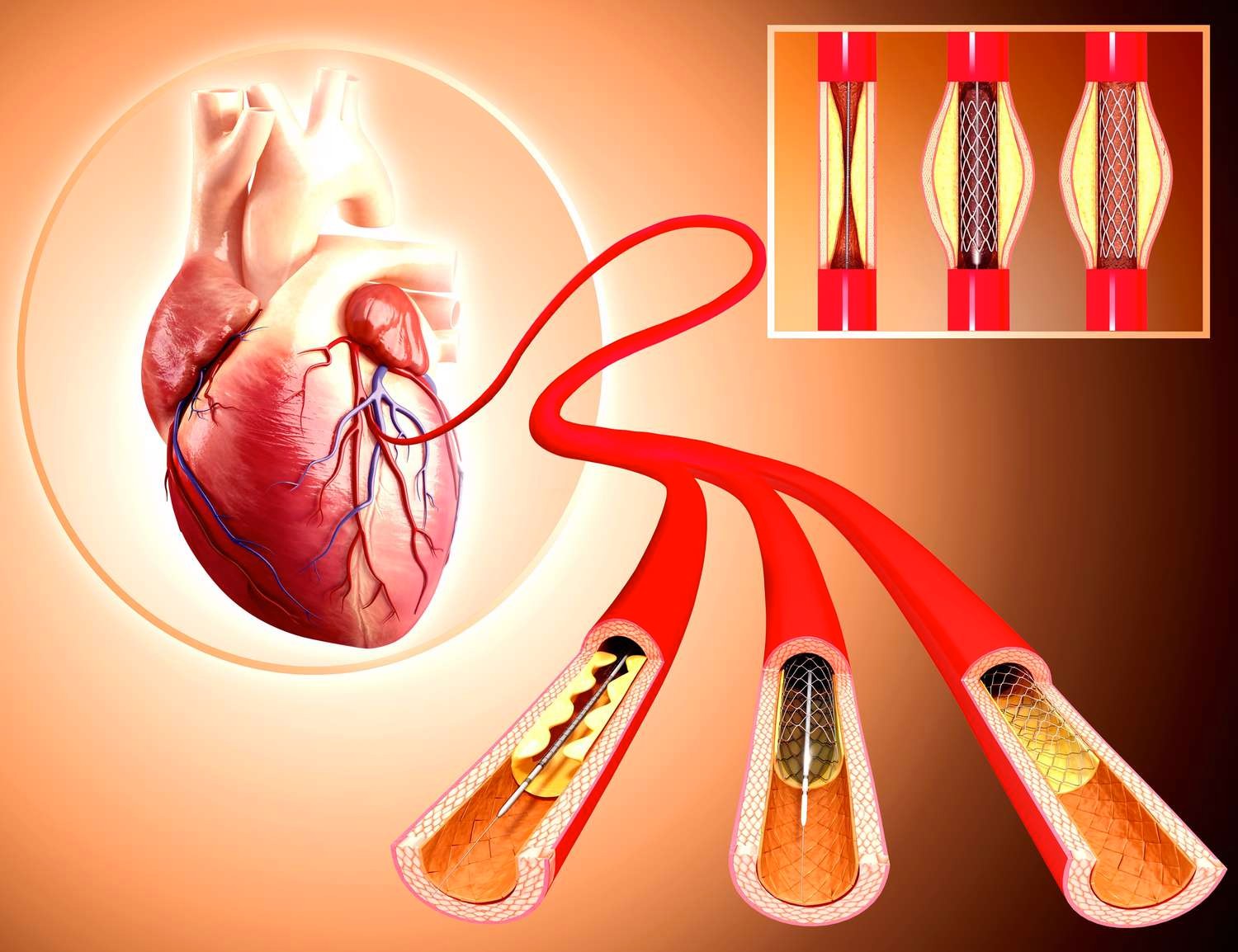Vascular diseases like strokes and heart attacks have the cause – atherosclerosis, plaque buildup in the arteries. Secondly, many medical methods address atherosclerosis-related arterial narrowing. Stent implantation and angioplasty are common. Therefore, these surgeries, their indications, techniques, benefits, and risks will be extensively covered in this essay.
Understanding Atherosclerosis
Angioplasty and stent placement need knowledge of Atherosclerosis. Atherosclerosis is a complex illness. It’s causes are fatty deposits, cholesterol, inflammatory cells, and other components in arterial walls. Therefore, plaques may constrict or block arteries, reducing blood flow to vital tissues and organs.
Angioplasty/Stent Indications
In certain cases, angioplasty and stent insertion are essential:
Angina
These surgeries may improve angina in patients with restricted coronary arteries.
A Heart Attack
After a myocardial infarction, heart muscle blood flow must be restored quickly. Therefore, emergency angioplasty and stent placement are common.
Heart Valve Disease
Stent implantation with angioplasty may improve blood flow in individuals with severe coronary artery blockages, reducing heart attack risk.
Ischemic Peripheral Arteries
These therapies may help improve circulation and ease pain from non-heart arterial blockages, such as leg arteries.
Atherosclerosis
Stent placement and angioplasty may reduce stroke risk in severe carotid artery blockages.
The Angioplasty Process
Minimally invasive angioplasty opens clogged arteries. Balloon or percutaneous transluminal coronary angioplasty is common names. So, this angioplasty detail is here:
Catheter insertion
First, a tiny, one places a flexible catheter into a blood artery. In brief, this normally happens via the wrist’s radial or groin’s femoral arteries.
Catheter Alignment Direction
Then the surgeon introduces a guiding catheter to the restricted artery and directed using fluoroscopy.
Balloon inflation
Through the guiding catheter, a smaller balloon catheter is put near the artery obstruction. The balloon is then inflated to expand the artery and force plaque against the walls.
Balloon deflation and removal
When the artery is big enough, the balloon deflation and removal process completes.
Assessment and Succession Planning
Angiography measures blood flow and arterial dilatation to verify the procedure’s efficacy. Therefore, extra balloons or stents may be utilized.
Putting Stents In
In conjunction with angioplasty, a small mesh or metal tube (stent) is placed in the treated artery to keep it open. In brief, procedures for stent placement:
Beginning Care with Angioplasty
To enlarge the artery for the stent, angioplasty is a common process first.
Stent insertion
A deflated metal or mesh stent is placed atop a balloon catheter to enlarge the artery after angioplasty. Next, the stent is advanced to the obstruction.
Stent Widening
When the inflated balloon enters after the stent is in appropriate position in the artery, it swells and pushes against the arterial walls. This opens the artery and secures the stent.
Deflating Balloons and Stents
The balloon is released and removed when the stent is securely in place, leaving the larger stent in place to maintain arterial patency.
Assessment and Succession Planning
Similar to angioplasty, angiography evaluates the procedure’s success and maintains arterial opening.
Benefits of Stents and Angioplasty
Stent implantation and angioplasty provide atherosclerosis patients these benefits:
Fast Symptom Relief
These surgeries restore heart muscle blood flow, which may relieve angina and chest pain quickly.
Minimal Invasion
Angioplasty and stent insertion are less intrusive than open heart surgery, requiring only tiny incisions, shorter hospital stays, and speedier recovery.
Enhanced Circulation
These procedures open clogged arteries to promote blood flow and reduce heart attack and cardiovascular risk.
Maintaining Heart Function
Angioplasty and stent placement may preserve heart muscle function by preventing heart attack damage.
Higher Quality of Life
These surgeries generally improve patients’ quality of life, making it simpler for them to exercise without restriction.
Dangers and Challenges
Although stent insertion and angioplasty are generally safe and effective, there are some risks and side effects to consider, such as blood pouring.
Although rare, catheter insertion may cause bleeding.
Infection with virus
Catheter insertion may cause infections rarely.
Reactions Allergy to Blood Clots
Blood clots in the stent or surgery site may cause heart attacks and strokes. Therefore, the operation contrast dye may cause side effects in certain persons.
Reestenosis
Restenosis may occur in the treated artery. So, more actions or intervention is important.
Stent-related thrombosis
Rarely, blood clots might block stent blood flow, requiring rapid medical intervention.
Renal function has the chance of damage by contrast dye during angiography, particularly in people with renal problems.
Arteries damaged
The treated artery may be damaged during surgery.
In summary
In conclusion, Angioplasty and stent insertion can unblock blocked arteries and restore blood flow to manage atherosclerosis. These minimally invasive techniques improve blood flow, relieve symptoms quickly, and reduce heart attack and cardiovascular risk. Like any medical procedure, they have risks and complications.
Therefore, stent placement and angioplasty depend on the patient’s medical condition, symptoms, and risk factors. This choice generally comes from the patient and healthcare team. Finally, these surgeries have transformed atherosclerosis treatment, giving many patients hope and a better quality of life.




